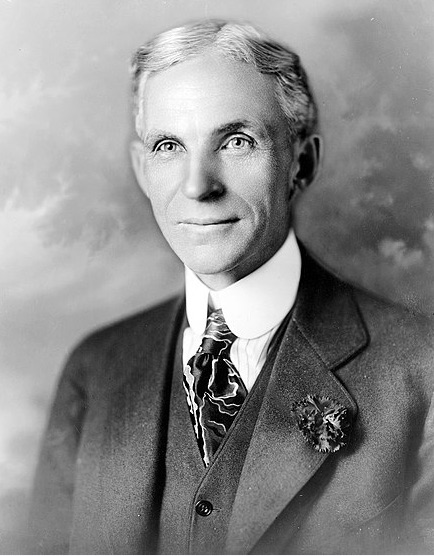
Henry Ford was born on July 30, 1863 in Dearborn, Michigan. America was in the throes of the Civil War, and the tide had turned in favor of the Union army at the Battle of Gettysburg as the strength of the industrial North was beginning to assert itself. Henry, the eldest of eight children born to Irish parents, William Ford and Mary Litigo grew up just a few hundred miles away from the conflict. Henry’s mother, the major influence of his life, died in childbirth when Henry was twelve. Devastated, Henry was forced to develop self-reliance and find his way in the world with limited guidance.
Within months of his mother’s death, Henry was transformed by two major occurrences. After his father gave him a watch for his birthday, Henry tore it apart and rebuilt it over and over, portending a growing obsession with mechanical things. On another occasion, he was riding with his father on the family wagon when a (steam-driven) horseless carriage thrashing machine drove past them. Henry was awe-stricken by the sight of a self-propelled vehicle and he jumped off the wagon in total wonderment. Forty-seven years later he would say, “I remember that engine as though I had seen it only yesterday.”
Ford attended a one-room school in Dearborn, Michigan until age fifteen and then dropped out to become an apprentice for a mechanic. As an inquisitive teenager, he built his first steam engine and actually started a watch manufacturing business. He further developed his skills as an apprentice at James Flower & Company and the Dry Dock Engine Works in Detroit. He would always have a disdain for higher education and throughout his career as CEO of Ford Motor Company, he was reluctant to hire college-educated individuals. On one occasion, when asked about his hiring strategies, he responded, “We hire a man, not his history. It is all one to me if a man comes from Sing-Sing prison or Harvard.”
Henry’s climb to greatness was launched one day in early 1896, when he read an article in The American Machinist on building engines. It so intrigued him that he decided to build his own engine and house it in a “horseless carriage.” He spent countless hours in the evenings after work building in his shed that was attached to the house. His friends wondered when he slept and some conjectured that his unrelenting obsession would result in a nervous breakdown. However, on June 4, 1896, around 3:00 a.m., he completed his masterpiece. This new vehicle–he called it a quadricycle–was a four-wheeled bicycle with a motor. The quadricycle proved to be a success. It proved to Henry that he could design a gas-driven vehicle that would run with a significant level of reliability. He was now driven more than ever to improve its design and function. This experience transformed Henry’s mindset from employee to entrepreneur and he would never turn back. He was almost 33 at the time. In the years that followed, Henry created the moving assembly line making the automobile affordable for the middle class. His belief that nothing is impossible to someone who has the will, is captured in his famous aphorism, “Whether you think you can or think you can’t, you’re right.”
